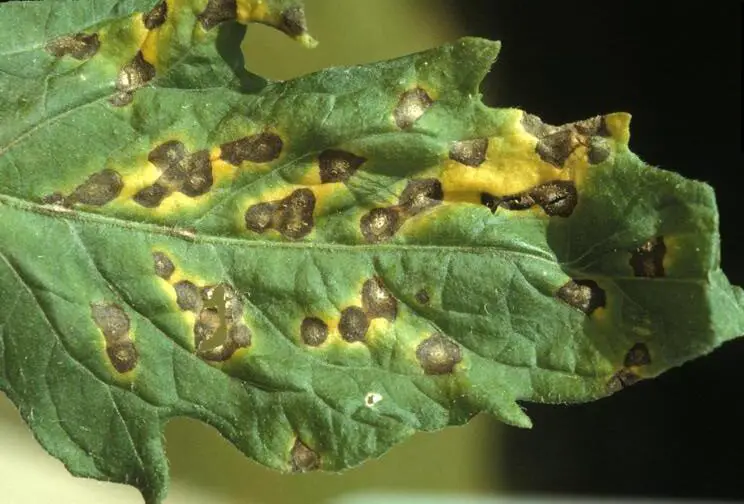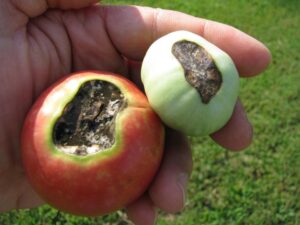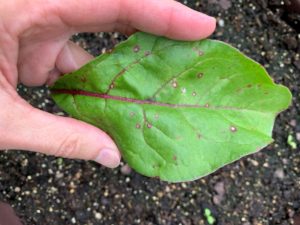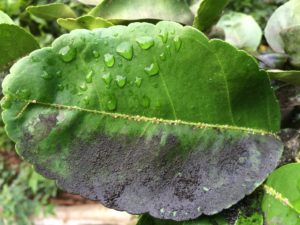The three most common forms of blight on nightshades, such as tomatoes, peppers, potatoes, and eggplant, are early blight, late blight, and Septoria leaf spot. In this article, you will learn how to identify, treat, and prevent Septoria leaf spot.
Septoria leaf spot, also known as Septoria blight, is caused by the fungus Septoria lycopersici, which is most active when humidity is high, plants are wet from rain or irrigation, and temperatures range between 68 to 77°F (20 to 25°C ). You can expect symptoms to develop about six days after fungal spores have infected plant tissue.
Small, brown spots or lesions that measure about 1/8 inch to 1/4 inch in diameter will first appear on lower leaves. The spots will be surrounded by bright yellow halos that develop light tan to white centers as the disease progresses. The pathogen will spread to the upper leaves. Stems and fruit are not usually affected unless the infection is severe.
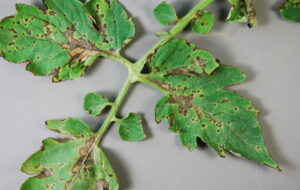
The spots will grow and may coalesce, turning the leaves from yellow to brown before they eventually fall off. You may also observe tiny, pepper-like specs inside the lesions, which are spore-producing structures. The disease can destroy the plant if left untreated.
Septoria leaf spot is sometimes misdiagnosed as early blight. The former pathogen has small spots with lighter centers, while the latter produces large, irregular spots with concentric circles.
Disease Transmission
Septoria leaf spot can be transmitted via tools, cages, stakes, and anything that has come into contact with the spores. It is also spread by water splashing onto plant tissue and by the wind.
The pathogen can overwinter on infected seed, plant tissue, and solanaceous weeds like horse nettle.
This article contains affiliate links. If you make a purchase using one of these links, I will receive a very small commission at no additional cost to you, and it will help me maintain this website. Rest assured, I only recommend products I actually like!
How to Treat and Prevent Septoria Leaf Spot
Neem Oil and Other Fungicides
Fungicides will not cure Septoria leaf spot; however they can be somewhat effective in slowing the rate of infection. Neem oil, with the naturally occurring ingredient azadirachtin, is a known organic fungicide. This is the brand that I use. You can learn more about neem oil and its uses in this helpful article.
Unfortunately, most cultivars are susceptible to this pathogen. However, there are some measures you can take to manage and even prevent an infection.
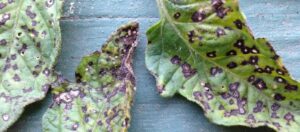
Provide Adequate Ventilation
When planting, allow adequate space between plants and prune as needed to allow for good ventilation. This will help the plant dry quicker after it rains, making the plant less hospitable to spores.
Practice Good Garden Hygiene
Remove infected leaves and throw them in the trash. Do not compost infected plants, as most compost piles do not maintain high enough temperatures to kill the pathogen. Also, remove all plant debris which harbor spores. Last, but not least, clean all garden tools, equipment, pots, etc., with a water and bleach solution. You can learn more here.
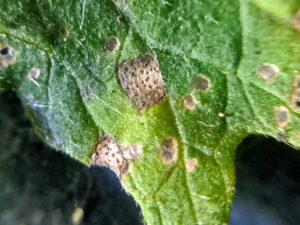
Rotate Crops
Rotate crops every three years. This means that you should not plant any member of the nightshade family in an area where another nightshade has been growing.
Irrigation
Water can splash onto the soil and infect plant leaves, spreading the spores. It is best to use a drip irrigation system or soaker hose if possible. You can also mulch around the plant to help prevent any fungal spores present in the soil from splashing up on the plant when it is watered or when it rains.
Use stakes or cages where appropriate to grow the plant vertically, keeping it off the ground.
Control Weeds
Remove weeds that belong to the solanaceous or nightshade family (horse nettle, jimson weed, etc.) since they can be hosts for the spores.
Septoria leaf spot is a type of blight that can devastate tomato crops and other members of the nightshade family, like peppers and eggplant. Good garden practices can help curb, if not prevent, this fungal disease from ruining your crops.
Thank you for reading this article! If you found it helpful, please consider sharing it with others via email and social media!
